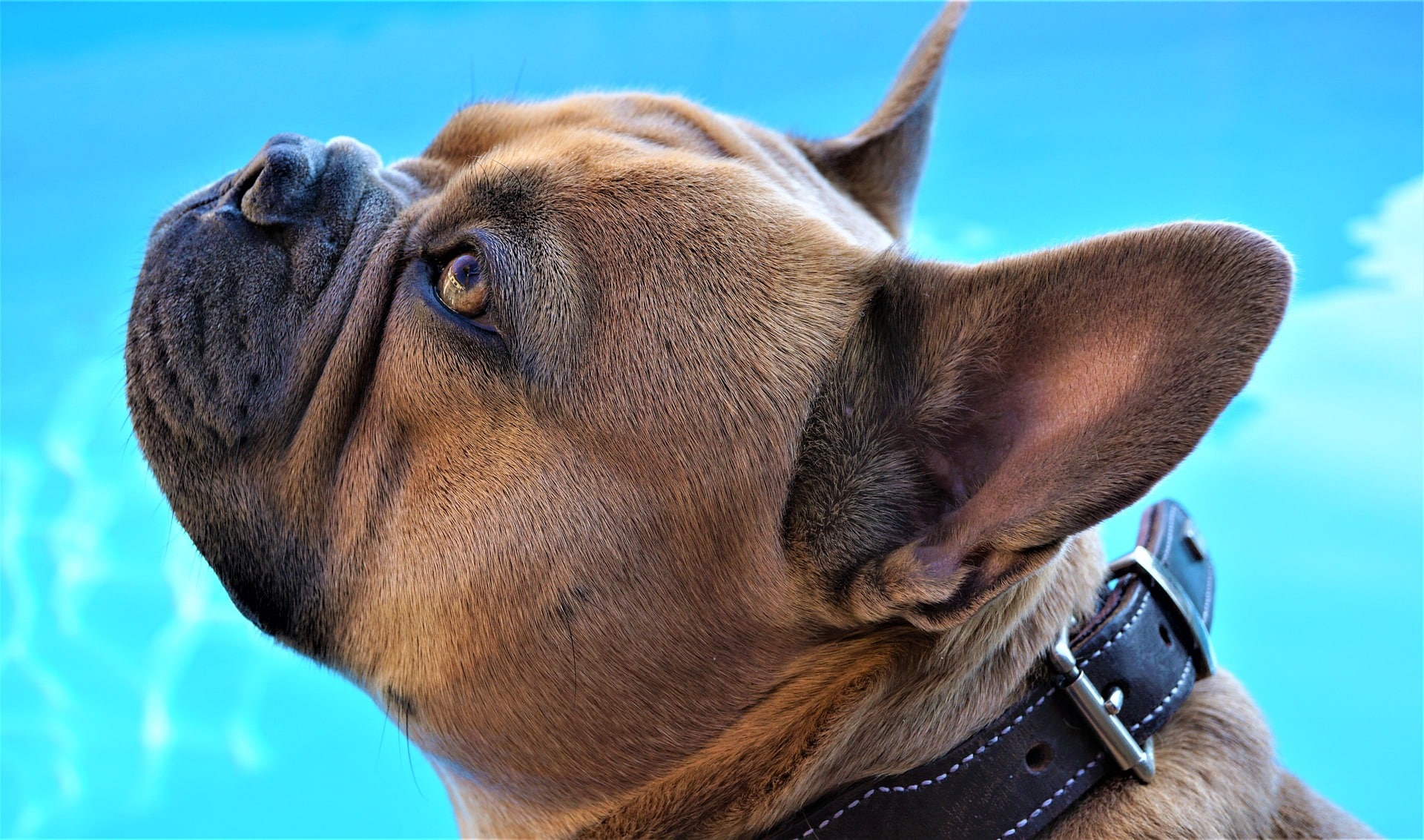How to choose an anti bark collar for your dog? This is one of the most googled questions from the owner’s end. But what mysteries have hidden to that? Well, it is none other than the callowness about it.
When choosing a bark collar for your dog, it is important to consider its features and suitability for your pet. Some key factors to consider include the type of collar (such as vibration, spray, or static training shock), the level of correction, the size and weight of your dog, and the collar’s durability.
It’s also worth noting that each dog is unique, and what may work for one may not work for another. Research shows that approximately 25% of dogs respond positively to citronella spray collars, while about 70% respond well to vibration or sound collars.
By understanding your dog’s temperament and preferences, you can make an informed decision and choose the bark collar that will effectively address their barking behavior. Looking to choose a dog collar? Here’s a step-by-step guide to help you make the right choice.
Things To Consider Before Choosing An Anti-Bark Collar

Start by considering your dog’s size, as different collars are designed for different breeds. Next, decide on the type of collar, whether it’s a spray, vibration, or static correction collar.
Assess the collar’s features, such as sensitivity levels and battery life. Read reviews and compare prices before making a final decision. Keep your furry friend’s comfort and safety in mind throughout the process.
Once you know the defining parameters of choosing a dog collar, the job will be easy for you. But what are the parameters you should pay heed to choose a ultrasonic bark collar for your buddy? Let’s have a look.
Size and breed
Barking is natural for a dog, so do the excessive barking. Hence, your dog won’t like what you are going to put in his neck as you won’t appreciate someone makes you stop to speak up.
So, the mission is making your dog less uncomfortable with the collar. Size is the first considerable parameter to ensure comfort.
How do you know if it fits or not? Consider the rule of thumb- at least one finger loose from your dog’s neck. And what about the different breeds?
There are also unique dog collars available for different breeds, such as if your dog’s breed is very small then you can opt for mini anti-bark collars. This mini collar has a special feature that can wrap up your dog’s neck and work efficiently in resisting the dog from unnecessary barking.
Sensitivity
Since you are a proud dog owner, you know how sensitive they are! Sometimes dogs react in silly things. So how would he react with the vibration or electric shock (though it is tiny) right in the neck? You have to treat him considering his behavior.
If your dog gets afraid easily, select a collar which has a feature of vibration and sound. The sensitive type of dogs would not be able to take the torments of electric shocks usually.
The strong breeds such as Ridgebacks or Bull Terriers can take shock treatment around the neck as they have a significant level of pain tolerance.
Material
The material of your dog collar plays an essential role as it will always be attached to your dog’s throat. The inner part material of the collar should be smooth and delicate to ensure possibly maximum comfort.
If the belt is not comfortable, your dog can get irritated and also may feel suffocated.
Design
You will find several types of no-bark collar in the market. You can also customize the dog collar’s design, such as bow-tie. We would personally suggest you opt for reflective collars and collars which have the option to tag basic information as this would help to find your dog even after sunset.
Types of Dog Barking Collar For Your Dog’s Neck

Ultrasonic collars
The sound makes the dog stop making excessive sounds. Funny, Right? When your dog starts making a nuisance, it sends an unpleasant ultrasound, which will stop your dog from further barking.
These ultrasonic bark collars effective and quick. Before buying ultrasonic collars, make sure it sounds clear, and the collar size is also adjustable.
Spray collars
These static bark collars release one kind of liquid sprays, such as lemon or citronella. The smell of this spray will be unpleasant to the dog, and it will prevent it from barking.
At the time of buying a spray collar, test it out a little bit at the store on your dog to see its reactions whether it’s allergic to it or not. Also, get an adjustable collar as spray collars work better when it’s perfectly fit.
Static shock collar
These are a little harsh but the most effective collar out there. It will stop your dog from barking instantly by passing an electric shock to your dog’s neck.
The collar also has the option of different levels of correction. While selecting a dog collar, check the beep function and waterproof feature of it.
When it comes to controlling excessive barking in dogs, choosing the right bark collar is crucial. Did you know that bark collars have been proven to be effective in reducing unwanted behavior in dogs?
With so many options available in the market, it can be overwhelming to find the perfect collar for your furry friend. But fear not, as I guide you through the process of selecting the right anti-bark collar for your dog.
Choosing a Bark Collar: Finding the Right Solution for Your Dog

Dealing with excessive barking can be a common challenge for dog owners. Whether your dog barks at every little noise or constantly disrupts the peace in your neighborhood, a bark collar can be an effective training tool.
However, with so many options available, it can be overwhelming to choose the right one for your dog breed. In this article, we will guide you through the process of selecting an a bark collar for your dog, ensuring you find the most suitable solution to curb their barking habit.
From different types of collars to various features and technologies, it’s important to consider several factors before making your decision. Understanding your dog’s needs, behavior, and preferences will be crucial in finding the perfect collar that works for them. Let’s explore the key considerations when choosing dog bark collars.
1. Determine the Cause of Barking
Before selecting an training collar, it’s important to identify the cause of your dog’s barking. Dogs bark for various reasons, including boredom, fear, anxiety, territorial behavior, or to get attention.
By understanding the underlying cause, you can choose a collar that addresses the specific trigger of the barking. If your dog barks due to separation anxiety, a collar with calming features such as pheromone dispensers or gentle vibrations may be more effective.
On the other hand, if your dog barks out of fear or aggression, a collar that emits a high-pitched sound or mild static correction may be more suitable. Consider consulting with a professional trainer or veterinarian to help determine the cause of your dog’s barking so you can choose the right collar.
2. Choose the Right Type of Dog Bark Collar
There are several types of anti bark collars available, each relying on different mechanisms to deter barking. The three most common types are:
- Static collars: These collars deliver a mild static correction when the dog barks excessively. The correction is harmless but acts as a deterrent to discourage barking.
- Vibration collars: These collars vibrate when the dog barks, creating a sensation that distracts the dog from barking. They are ideal for dogs with sensitive or deaf ears.
- Spray collars: These collars release a burst of citronella spray or another harmless scent when the dog barks. The scent is unpleasant to dogs and discourages barking.
Consider your dog’s behavior, sensitivity, and responsiveness when selecting the type of collar. Some dogs may be more sensitive to certain types of corrections, so it’s important to choose one that suits their needs and comfort level.
3. Consider the Sensitivity and Correction Levels
It’s essential to find a bark collar with adjustable sensitivity and correction levels. Dogs have different thresholds for pain or discomfort, so having the ability to customize the collar’s settings ensures a more personalized and effective training experience.
A collar with multiple sensitivity levels allows you to find the ideal setting that triggers the correction only when necessary. Additionally, adjustable correction levels enable you to start with the mildest level and gradually increase if needed, minimizing any unnecessary discomfort for large dogs.
4. Size and Comfort
When choosing a bark collar, it’s crucial to consider your dog’s size and comfort. The collar should fit securely without being too tight or too loose. Most manufacturers provide sizing guides to help you determine the appropriate collar size for your dog.
Additionally, look for collars with padded straps or soft materials to ensure optimal comfort for most dog breeds. It’s important to avoid collars that may cause irritation or discomfort, as this can create a negative association with wearing the collar and hinder the training process.
5. Battery Life and Charging Options
Consider the battery life and charging options of the bark collar. The last thing you want is for the collar to run out of power in the middle of training. Look for collars with long battery life, and if possible, opt for collars with rechargeable batteries for convenience and cost-effectiveness in the long run.
Some collars come with indicators that alert you when the battery is running low, ensuring you can recharge or replace it in a timely manner. Assess your dog’s training needs and frequency of use to determine the ideal battery life and charging options for your situation.
6. Waterproof or Water-Resistant
If your dog loves to play in the water or lives in a rainy climate, it’s essential to choose a waterproof or water-resistant collar. This feature ensures durability and functionality even in wet conditions, preventing any damage to the collar or interference with its effectiveness.
7. Research and Read Reviews
Before making a final decision, it’s always a good idea to research different brands and read reviews from other dog owners. This allows you to gather insights into the collar’s effectiveness, durability, and overall user experience. Pay attention to reviews from dog owners with similar breeds or barking issues to ensure the collar will be a suitable solution for stubborn dogs.
8. Consult with Professionals
If you’re uncertain about which bark collar to choose or need additional guidance, don’t hesitate to consult with a professional trainer or veterinarian. They can provide expert advice based on your dog’s specific needs, helping you make an informed decision and ensuring the collar’s effectiveness in reducing excessive barking.
Key Takeaways On How to Choose The Right Bark Collar For Your Dog
- Consider the size and breed of your dog when choosing an dog collar.
- Choose a collar with adjustable settings to suit your dog’s sensitivity level.
- Look for a collar that uses humane methods to deter barking, such as citronella spray or vibration.
- Ensure the collar is comfortable and safe for your dog to wear.
- Read reviews and consult with a professional trainer or veterinarian before making a decision.
Frequently Asked Questions To Control Your Dog’s Barking Behavior
Choosing the right dog collar for your dog is an important decision to ensure their comfort and safety. Here are some frequently asked questions to help guide you in choosing the best collar for your furry companion.
1. What features should I look for in a dog barking collar?
When choosing an dog collar, it’s important to consider the following features:
Look for an adjustable collar that can fit comfortably around your dog’s neck. The training collar should not be too tight or too loose since this can cause discomfort or inefficiency in bark detection.
In addition, consider the type of stimulation the collar provides. Some collars offer static stimulation, while others use sound or vibration. It’s crucial to choose a stimulation type that is effective in reducing your dog’s barking without causing harm or distress.
2. Is it necessary to consult a professional before using a dog collar?
While it is not mandatory, consulting a professional dog trainer or veterinarian before using an dogcollar is highly recommended. They can assess your dog’s specific needs and behavior, providing guidance on whether an dog collar is suitable for your dog.
Consulting a professional can also help ensure you choose the right type of collar and understand how to use it properly. They can offer valuable insights and tips to make the training process more effective and minimize any potential risks.
3. Are there any potential risks or side effects associated with anti-bark collars?
When used correctly, anti-bark collars are generally safe for dogs. However, it’s important to be aware of potential risks and side effects.
The most common side effect is temporary discomfort or skin irritation, especially if the collar is not properly fitted or if it is used for an extended period of time. It is important to monitor your dog’s skin for any signs of irritation and adjust or discontinue the use of the collar if necessary.
Some dogs may also become anxious or fearful if the collar is not introduced gradually or if it is used inappropriately. It is crucial to follow the manufacturer’s instructions and consult a professional to ensure the collar is used safely and effectively.
4. Can an bark collar be used for all types of dogs?
Ultrasonic bark collars are generally suitable for most dogs. However, it’s important to consider your dog’s size, temperament, and any underlying health conditions before using a dog collar.
Some small or sensitive dogs may be more affected by the stimulation provided by the collar, so it’s important to choose a collar with adjustable sensitivity levels and start with the lowest setting. For dogs with certain medical conditions or behavioral issues, consulting a professional is recommended to determine the most appropriate training method.
5. How can I ensure effective and safe training with a dog collar?
To ensure effective and safe training with a dog barking collar, follow these guidelines:
1. Carefully read and follow the manufacturer’s instructions for proper collar fitting and usage.
2. Gradually introduce the collar to your dog, allowing them to get comfortable with wearing it before activating the stimulation.
3. Use positive reinforcement techniques in conjunction with the collar to reinforce desired behaviors.
4. Regularly check your dog’s skin for any signs of irritation or discomfort, and adjust or discontinue use if necessary.
5. Consult a professional if you have any questions or concerns, and always prioritize your dog’s well-being throughout the training process.
Conclusion
Choosing an collar is not a difficult task at all. Once you are acknowledged with all the facts which we have mentioned here, it will be an easier task for you to choose the right anti-bark collar for your dog. Remember, if you fail to choose the perfect one for your dog, both your time and money will go in vain.
Last Updated on 16/03/2025 by Karen Snow
Hi! I’m Karen and a certified dog lover. As a freelance writer and blogger, I do my best to squeeze in some time with my dogs, learning more about the way they act and how I can make sure that they continue to stay well-cared for by yours truly.
My dogs have helped me through a lot, and this is my way of giving back to them! Besides animals, I also love to travel and cook, having explored my country’s restaurants and unique places. Follow me as I show you all the amazing tips and bits of information I learn along the way about our furry friends!
